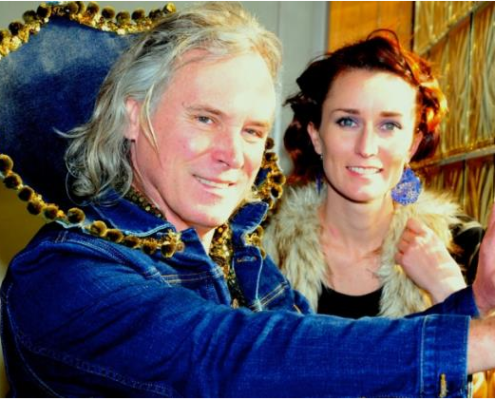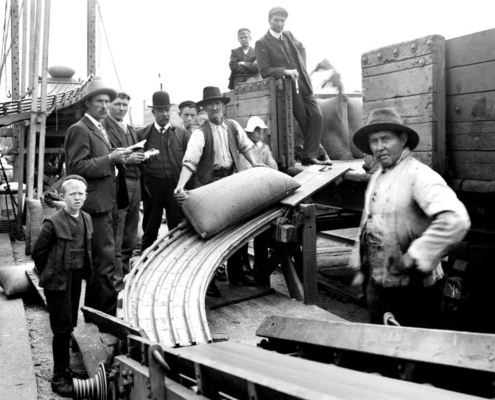Skyhooks’ Bongo reprises Oz’s glam rock
HOOKED: Former Skyhooks guitarist Bob ‘Bongo’ Starkie and Million Dollar Riff bandmate Laura Davidson. Picture: Joe Mastroianni
GUITARIST Bongo Starkie’s colourful frill-necked lizard collar is one of Australian rock’s more curious 1970s images.
But then, his band, Skyhooks, was not known for its shy, retiring ways.
White suits and fedoras, mock Tudor vests and wimples, jumpsuits, capes, wigs, boas, makeup by the bucketload – the biggest Aussie band of the era had a fair clout on stage and screen alike.
Forty years later, Starkie’s running the show out again with a bunch of younger musical mates to critical acclaim.
The originals, he said, had either passed on, become otherwise occupied or even a tad weary of touring.
Starkie’s new band, Million Dollar Riff, has resurrected the glitz and glitter, the punchy riffs and counter-riffs, and catchy chart-busting lyrics of Greg Macainsh’s original Skyhooks hits.
The songs are driven by the powerhouse vocals of Laura Davidson to help kick up a ’70s revival storm.
Starkie was clearly excited about it when talking to the Independent, which was unsurprising given the swag of familiar favourites in the hit-kit to draw from: Toorak Cowboy, Balwyn Calling and Carlton (Lygon Street Limbo), You Just Like Me ’Cos I’m Good in Bed, Blue Jeans, Jukebox in Siberia, Million Dollar Riff, Living in the Seventies, Horror Movie and Ego is Not a Dirty Word and Women in Uniform.
“We’ve got the glam going, a bit of colour and movement. I’ve glitzed the band and all the boys are wearing glitter and I’ve got the lizard collar out – it’s all happening,” he laughed.
“Laura’s a great rock chick, a western suburbs girl, I found her working in AC-DSHE singing Bon Scott. She’s got a great personality and she’s great with audiences.
“We couldn’t do it without her.”
Starkie said late Skyhooks frontman’s Shirley Strachan’s high-register vocals were a hard ask for any male singer but Davidson delivered the goods in spades, making the show a “real celebration of Greg Macainsh’s songs”.
Strachan died in a 2001 helicopter accident.
“Over the years people have often requested Skyhooks tunes but the fact of the matter was you really needed someone who could deliver a performance like Shirl,” Starkie said.
“I’ve found that someone in Laura. She’s wonderful to perform with and can sing the hell out of these ‘Hooks tunes.”
Starkie, 62, said he had developed considerably on the guitar skills he deployed alongside Red Symons in Skyhooks.
“I was self-taught and I’d be more interested in getting feedback and then working out riffs to go with Macainsh’s tunes. I was learning on the job.
“It wasn’t very good musical training, idiosyncratic I call it, but it all worked. We made a lot of records and a lot of tunes but in the end it was hard to play with others, I was so used to making up my own stuff.”
Starkie hightailed it to Brazil where he found a triple-set of Chuck Berry songs and set to learning everything he could. It took a while but he figured out 30-odd songs, note for note, and feels much more comfortable with his proficiency these days.
He also teamed up with Great Train Robber Ronnie Biggs while in Rio for a film documentary that, regrettably, never saw the light of day.
“I’ve got some of the best footage of Ronnie in the world but it’s sitting in my garage,” Starkie said.
Bob Starkie and Million Dollar Riff will perform at North Geelong’s Sphinx Hotel on 13 February.













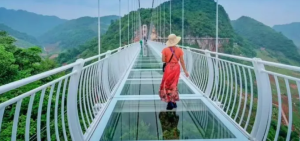






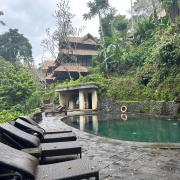
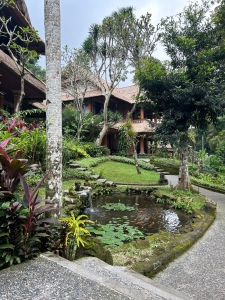


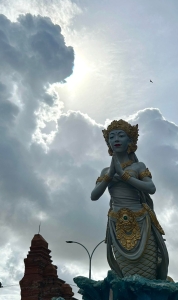

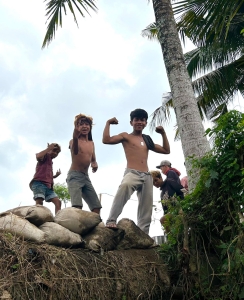






 .
. 


















